
















































Editor:
Johann Tasker | T: 07967 634971
E: johann@ruralcity.co.uk
Design:
Mark Shreeve | T: 01502 725839
E: mark.shreeve@micropress.co.uk
Advertisement production:
Polly Coleman | T: 01502 725841



E: polly.coleman@micropress.co.uk
Chloe Miller | T: 01502 725844
E: chloe.miller@micropress.co.uk
Danny Lewis | T: 01502 725862
E: danny.lewis@micropress.co.uk
Daniel Rice | T: 01502 725858
E: daniel.rice@micropress.co.uk
Mat Roffey | T: 01502 725854
E: mat.roffey@micropress.co.uk
Mark Tait | T: 01502 725803
E: mark.tait@micropress.co.uk
Midland Farmer is a controlled circulation magazine published monthly for farmers and growers in the Midlands (Derbyshire, Herefordshire, Leicestershire, Lincolnshire, Northamptonshire, Nottinghamshire, Shropshire, Staffordshire, Warwickshire, West Midlands and Worcestershire) or companies supplying goods and services to the sector. To be included on the circulation list, a farmer must have a minimum of 70 acres of land, or 50 dairy/beef stock, or 50 breeding sows/250 growing stock, or 15,000 laying hens/broiler chickens. Intensive horticulture units are required to have a minimum of two hectares.
If you no longer wish to receive this magazine, please email your name, address and postcode as it appears on the wrapper to adam.gunton@micropress.co.uk
© Countrywide Publications 2023
Published by Countrywide Publications, Fountain Way, Reydon Business Park, Reydon Suffolk IP18 6DH T: 01502 725800





Printed by Micropress Printers Ltd T: 01502 725800
e're in for a challenging year: rising input costs – or ag-inflation –are set to remain a key concern for farmers during 2023, say experts.
Higher costs in some areas appear 'baked in', say farm consultants Andersons, who forecast a sobering year ahead, with no signs that energy prices are going to decrease while conflict continues in Ukraine.
At the same time, prices in some sectors are weakening. Global markets are adjusting to restrictions on Ukrainian grain shipments and faltering consumer spending ahead of an expected economic downturn.
So what does all this mean? Should we even dare venture beyond the farm gate?
Well, Andersons forecast that 2023 will see UK farm profits drop by up to a third –not the sort of news anyone wants to hear at the start of a new year when it is customary to look to the future full of optimism.
This would put profits back at levels last seen during the tough years around the turn of the millennium. But it is important to point out that the forecast looks only at the aggre-
gate position for UK farming as a whole, not at individual businesses.
Some farm businesses will clearly do better than others. Andersons says there will be huge differences between sectors – and indeed individual farms – depending on how input costs and output prices interact.

It should also be noted that things do change – sometimes unexpectedly. A year ago, few people would have predicted that 2022 would see Russia invade Ukraine, three UK prime ministers and the death of Queen Elizabeth II.
We should remember too that farming is a long-term business. Yes, the immediate future looks challenging, but as Andersons points out, farming has faced difficult times before and has come through them.
The desire to grow good crops, raise healthy livestock, look after the land and pass something worthwhile to the next generation is something to be celebrated. We wish you all the best for 2023 and beyond.
Johann Tasker Editorthe biggest sectors – dairy and combinable crops. Secondly, the full effect of cost increases will not have been felt, even in 2022.
•
Farm profits are set to come under significant pressure over the coming year – although experts forecast huge differences between individual businesses.
Cost inflation will continue to be high while output prices may weaken due to the economic slowdown, according to the latest estimates contained in the Andersons Outlook 2023, which has just been published.
“Looking to 2023, the forecast is sobering,” says Andersons partner and head of research Richard King (pictured)
“Higher costs in some areas seem ‘baked in’ – for the short-term at least – with no signs that energy prices are going to decrease while the Ukraine conflict continues.
“In other areas, such as wage rates for seasonal workers, the 15% increase in 2022 is irreversible. There will be inflationary pressure on many other inputs as individuals and businesses put up prices to try to keep up with inflation.”
Cost increases were the big topic in farming during 2022. And the report says 2023 looks set to go the same way. When all said and done, it predicts that total UK farm profits for 2022 will show a decline of 15-20% compared to 2021.
Much fertiliser was purchased at lower prices in 2021; electricity prices only started to peak in autumn 2022; and many costs linked to general inflation levels in the economy – such as labour – take time to catch up with the unexpected surge in price levels.
Profits will also be affected by changes in support, adds Mr King.
Basic payments to farmers were 20% lower in 2022 compared to 2020. Although this money is to be ‘recycled’ through other schemes, it is unclear it will all be spent in 2023 with the gradual rollout of new agri-environment schemes.
Furthermore, while the farm support budget is guaranteed until 2024, it is fixed at current prices – and with a high rate of inflation, the real term value of it drops quite quickly. Output prices in some sectors may also weaken.
This is because global arable markets have had more time to adjust to restrictions on Ukrainian exports – and shipments may increase in volume. At the same time, demand could decrease for some commodities due to the economic downturn.
“Andersons forecast for 2023 currently sees UK farming profits dropping by up to a third,”


Although the immediate future looks challenging, the farming sector has faced difficult times before – and has come through them.
“These forecasts only look at the aggregate position for the whole UK farming industry,” says Andersons partner Richard King.
“There will be huge differences between sectors and, indeed, individual businesses depending how costs and incomes interact.”
This year marks 50 years since Andersons was founded as David Anderson and Co in 1973. It is easy to state that the agricultural and food industries are unrecognisable from the early 1970s, says Mr King.
“Indeed, there has been huge change in many areas. A special anniversary article in Outlook 2023 compares 1973 with today which highlights some of these changes. But the fundamentals perhaps have not change as much.”
Farmers remain keen to grow good crops, raise healthy livestock, look after the land and pass on something worthwhile to the next generation, adds Mr King.
Copies of Andersons Outlook 2023 can be obtained free of charge by calling 01664 503200.
The report is also available to download from the publications section of the Andersons website at www.andersons.co.uk.
Left: Some higher costs appear baked in, says the report.
• Higher costs set to continue
• Output prices could weaken
Some sectors more affected




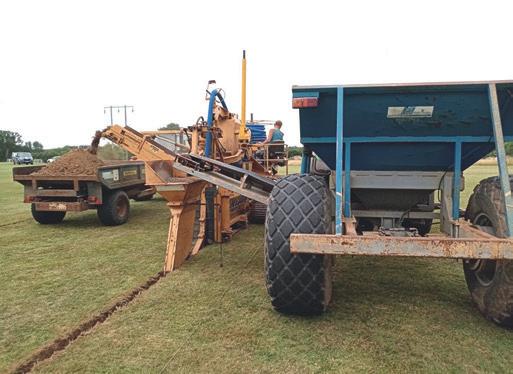




Hundreds of farmers are expected to attend this year’s Lincolnshire Farming Conference – due to take place on Thursday, 9 February, at the Lincolnshire Showground.

Organised by the Lincolnshire Agricultural Society, this year marks the first conference in two years due to the pandemic. During the day, attendees will be able to hear talks from a number of key speakers on the theme Healthy Soils, Healthy Minds.
Conference chairwoman Kelly Hewson-Fisher said: “After two years of forced cancellations, we’re very excited to announce that the Lincolnshire Farming Conference will return at the start of next year.
“Lincolnshire is one of the UK’s biggest agricultural counties, and it’s great to be able to bring the local farming community together with leading experts to discuss the future of the agricultural industry – with a focus on
healthy soils.”
This year’s event sponsors include Omex, University of Lincoln, Woldmarsh, Streets accountants, Shakespeare Martineau, Anglian Water, Dallas Scott Davey, CLAAS, Brown & Co and JH Walter.
Tickets sales are now open. They cost £15 for adults, £6 for students and are free of charge to members of the
Farmers are being urged to sign up for the 10th annual GWCT Big Farmland Bird Count, which takes place on 3-19 February.
The bird count sees hundreds of farmers spend 30 minutes in one spot on their land, counting and identifying the birds they see. Results build a national picture of which species are benefiting from farm conservation efforts – and which need more help.
“We will not achieve biodiversity recovery if conservation is confined to nature reserves and
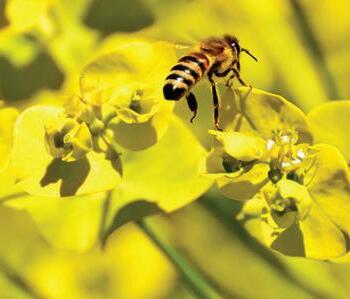

national parks,” says Roger Draycott, from the Game & Wildlife Conservation Trust, which organises the annual count.
“Some 72% of the UK’s total land area is used for agriculture, so farmers, land and woodland managers, and gamekeepers have a vital role to play in the future of wildlife.

“The GWCT Big Farmland Bird Count is an opportunity for them to see just what impact their efforts are having.”
For full details, visit www.bfbc.org.uk
NAEC, Stoneleigh
The business event showcasing low carbon practices, technology and energy solutions for a profitable & sustainable farming future.




Low Carbon Agriculture is a vibrant business event for forward thinking farmers, landowners and industry operators. The event will explore ways to address climate change through the generation of renewable energy, the implementation of low carbon technology and best practice in both carbon and environmental land management.
In partnership with

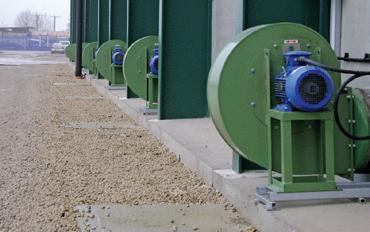
Growers wanting to see the latest in sugar beet harvesting can now take advantage of free, on-farm demonstrations.
Grimme is giving growers the chance to drive its Rexor 6200 beet harvester with 30m³ bunker capacity on their own farm – so they can see how it handles alongside their current harvester.
The new Rexor features completely redesigned digging attachments, including seven cleaning rollers rather than six. Thanks to the external frame, the driver always has an unobstructed view of the roller table and the entire digging unit.
Oppel wheel digging units feature four beet feelers rather than two, which are also used as feeler skids. The redesigned unit can be guided precisely along the row at the optimum height, improving the
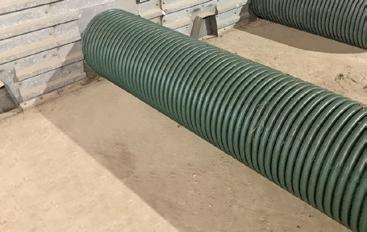
auto pilot’s steering behaviour when cornering.
Up to eight camera images can be displayed on the 12-inch touch screen monitor.
The new generation of Rexors is available with a five-year guarantee for the first time, complemented by flexible rental models and competi tively priced service packages.
“The new Rexors are the most ad vanced sugar beet harvesters ever to be built by Grimme,” says Grimme beet specialist Tom Howlet.
“The harvesters were really well received when they were unveiled in Germany in the summer. We ex pect the same levels of interest from UK growers, and we’re confident that when they see it operating in their fields, they’ll be suitably impressed.”
To book a demo, call 01205 822 300 or email t.howlet@grimme.co.uk
Having previously worked for CLA sponsors MFG So licitors for seven years, Ms Dwerryhouse was more recently CLA national lead on policy and advice for access covering England and Wales.
Outside work, she enjoys competing her horses in national events through British Eventing, travelling and walking her dogs. Ms Dwerryhouse said: “I am delighted to be joining the Midlands team as their regional director.”
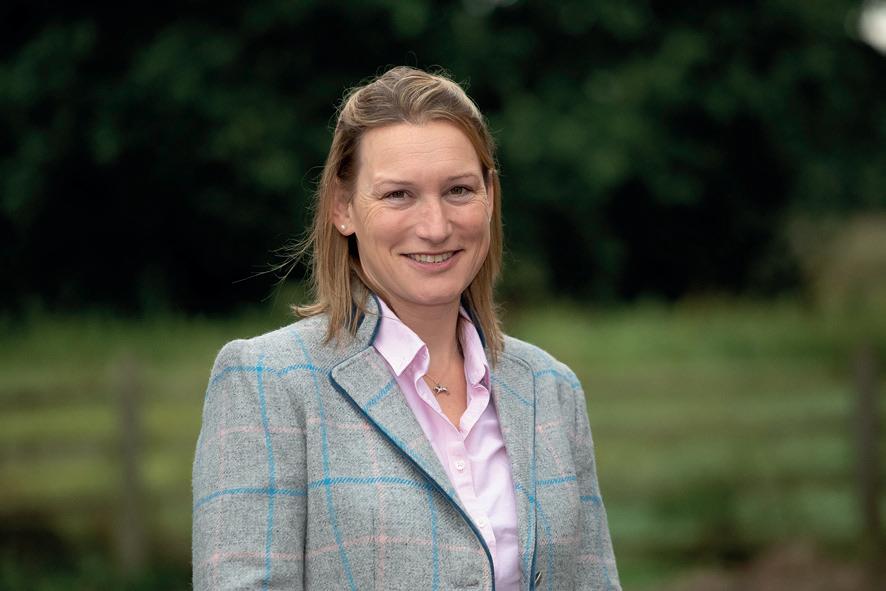


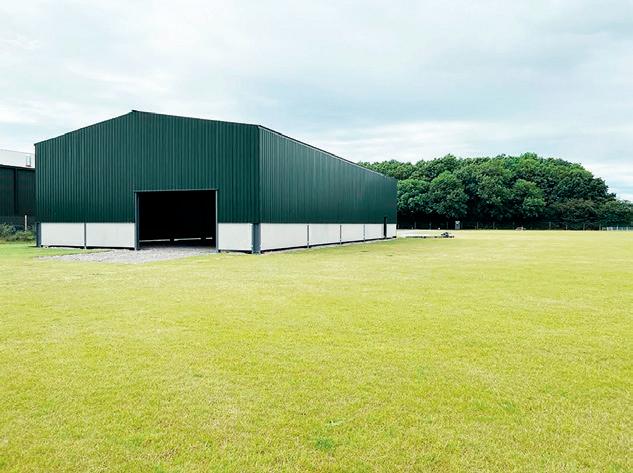



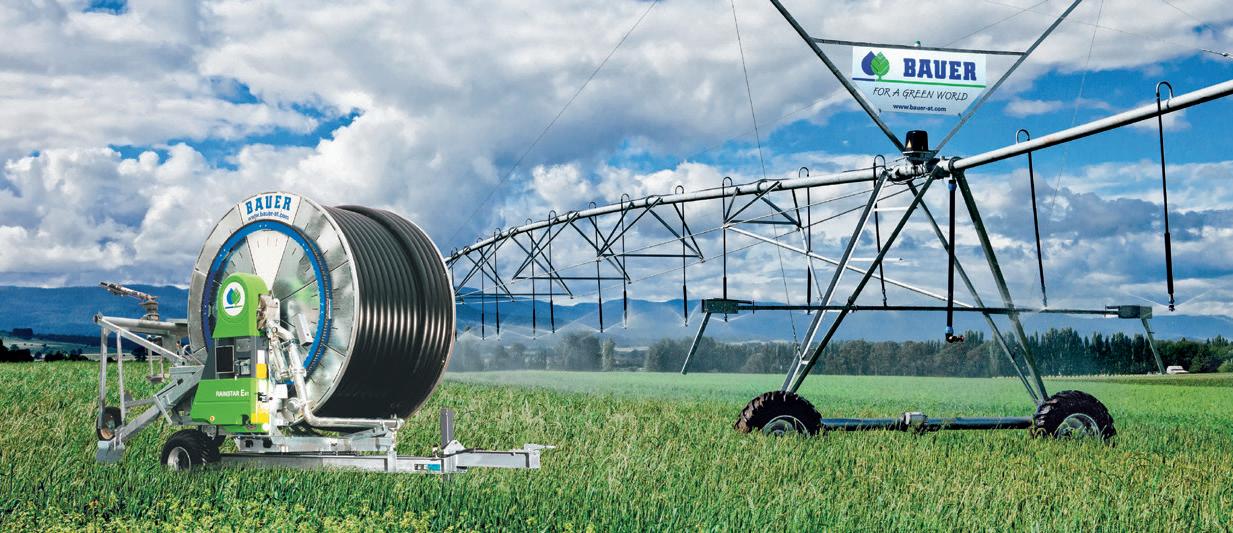























• Huge increase in UK fertiliser costs
• Commodity prices have eased back
• Plan ahead to respond to challenges
Higher working capital require ments are set to squeeze ar able profitability for Harvest 2023 – with a big impact on cashflow too, say experts.
Harvest 2022 was a profitable year for many arable growers who pur chased the bulk of their inputs before the massive increases in input costs and benefited from the significant increases in grain prices.
But input costs are significantly higher for Harvest 2023 and commodity prices have eased back from highs seen earlier in 2022, says Rhodri Thomas, head of rural at farm business consultants Strutt & Parker.
The economic downturn, shifting sands of agricultural policy, climate change, the biodiversity crisis and soaring input prices are all likely to be critical influences within the rural sector in 2023, says Mr Thomas.
“It is clear we are facing a period of accelerated change in terms of land management. This time of year is ideal for land managers to start gathering information and data to help them work out the best ways to respond to the challenges they will face.”
Planning ahead and budgeting are important. “The good news is that some new and exciting opportunities are also emerging, and land managers would be wise to be proactively thinking about their options to identify where the best opportunities might lie.”
Sebastian Graff-Baker, of farm business consultants Andersons, says ongoing uncertainty surrounding future fertiliser availability has encouraged more growers to secure 2023 supplies early – with some even securing
“The increase in working capital requirement may require an increase in the level of security where funds are borrowed and will see an increase in finance costs," says Mr Graff-Baker.
“But where cash surpluses exist from 2022, the opportunity to reduce long-term borrowing should be taken where appropriate.”
Favourable autumn conditions mean a rise in the winter cropping area for harvest 2023, according to the AgMore growers must recognise the improvement that soil health can make to arable incomes, say farm business consultants Andersons.

riculture and Horticulture Development Board (AHDB) early bird survey, conducted in partnership with Andersons and the Association of Independent Crop Consultants.
Those crops are generally performing well, with 87% of the UK's winter wheat crop said to be in good-excellent condition and overall prospects looking good for the season.
Careful nitrogen management will be required in certain areas moving forward, says the AHDB.
tion of soil organic matter.
“As an industry, we have, on average, depleted soil organic matter – albeit inadvertently,” says the latest Andersons Outlook report, which examines the prospects for UK farming in 2023.
This has resulted from the increased use of synthetic crop nutrition and crop protection products, and perhaps excessive cultivations, without maintaining the beneficial effects of grazing livestock and crop diversity as part of a wider rotation.”
In the past, says the Outlook report, this has been based on commercial logic – assessing combinable crop profitability only using the convention of annual profit and loss, without placing a cost on the reduc-
The report says there are already the beginnings of farming businesses being paid to sequester carbon in order to help reduce atmospheric carbon dioxide emissions, using soils that have low levels of carbon as a result of past farming practices.
“Clearly one of the key issues is to find the balance between continuing to produce combinable crops in a way that generates profit from year-to-year whilst delivering a reward from sequestering carbon and in doing so increase the health of soils.
“With the right management this, in turn, should improve yields and ultimately profitability. Restoring soil health is a long-term undertaking which, as an industry, we need to buy into at all levels, not least land tenure and security.”
Favourable conditions last autumn helped crops get off to a good start
•
•
•
Profitable September-sown winter wheat crops can be grown long-term on land with a history of serious blackgrass infestation, according to the latest results from Agrovista’s Lamport AgX trials site in Northamptonshire.
Work at the heavy-land site also suggests that growers who want to maximise their wheat area could use spring wheat in sequence with winter wheat to increase profits.
But great care must be taken in both cases to minimise blackgrass germination throughout the rotation, notably by using a sequence of cover crops and spring cropping (see box)
Results from harvest 2022 trials show that returning to a first wheat after a run of cover crops/direct drilled spring crops can produce exceptional yields, even on a heavy-land site such as Lamport with a background blackgrass population that exceeds 2000 plants/m².
“First wheat yields this harvest ranged from 12.5-13.4t/ha when following Lamport best practice,” says Agrovista technical manager Mark Hemmant.
“We counted less than one blackgrass head per square metre in these trials, which shows what can be done.” But growers have to stick to the guidelines or risk going backwards with blackgrass control.

“Before considering a return to winter wheat you have to reduce the weed seedbank to a low-enough level to give full-rate herbicides a chance to work. We know that even a stack containing the latest chemistry is not good enough where blackgrass numbers are high.”
Previous cropping on these winter wheat plots consisted of a black oatbased cover crop followed by spring oats in 2019/20, followed by a cover
crop then spring beans last season.
The plots were direct drilled on 28 September at 300 seeds/m² into a lowcost linseed/berseem clover catch crop blown into the beans. First wheats received full-rate chemistry to control blackgrass – Proclus Liberator and Avadex followed by full-rate flufenacet early post emergence.
The winter wheat work is being extended to see if wheat can feature in successive seasons for growers who want to maximise the crop on their land, particularly pertinent given the current price of wheat. A second winter wheat is not part of the plan.
Agrovista advisor Niall Atkinson says previous experience at Lamport AgX shows second wheats undermined years of effort to control blackgrass. Levels soared close to those seen a decade ago, decimating yields and margins.
“We are still looking at growing successive wheat crops, but we are asking whether we can grow winter wheat one year and an autumn-sown cover/ direct-drilled spring wheat the next, and so on.”
The winter wheat plot in this case had been under a cover crop/spring wheat regime for the past four years. Mr Hemmant says: “This plot yielded just over 11t/ha. This was slightly down on the other winter wheat plots that followed a more mixed rotation.”
“But over the years we’ve been achieving 7-8t/ha from a spring wheat after a cover crop at Lamport, so when we cost the successive wheat rotation it may well be the more profitable option.”
First wheat yields ranged from 12.5-13.4t/ ha, says Mark Hemmant
In addition, the system still provides the benefit of an autumn-sown cover, and a catch crop ahead of the winter wheat if desired, contributing to improving overall soil heath, says Mr Atkinson.
“As a grower I like this idea, and economically it looks great. But I do have slight concerns about take-all.”
Mr Hemmant says within the life of Lamport AgX and in this plot specifically, which has just had a run of cereals, he has never seen the disease.
“We think by breaking up the run of straw crops with black-oat based cover crops we’re breaking the take-all cycle, so we believe we can successfully grow a long run of cereals, plugging in winter wheat in the appropriate slots, in place of a mixed rotation.”
A sequence of cover cropping followed by spring cash cropping has achieved excellent control of blackgrass in crops at Lamport AgX over the past 10 years.
The technique uses a cover crop to condition the soil to enable spring drilling. But it is sown thinly into a shallow seedbed to encourage blackgrass to grow so it can be destroyed with the cover crop around Christmas.
This is followed by a spring crop, which is direct drilled to minimise soil disturbance and potential blackgrass germination.
“We’ve created a system that works fantastically well,” says Mr Atkinson. “We’ve proved that it’s possible to grow successful spring crops on heavy, challenging soil while controlling blackgrass at the same time.”
Best practice produces results
System works 'fantastically well'
Second wheat not part of plan
It’s that time of year again when Severn Trent’s Environmental Protection Scheme is open for applications.
The main aim of the scheme is to protect water quality and the environment and Farmers applying for STEPS can choose from a list of pre-defined funding options to contribute up to £10,000 of match funding.
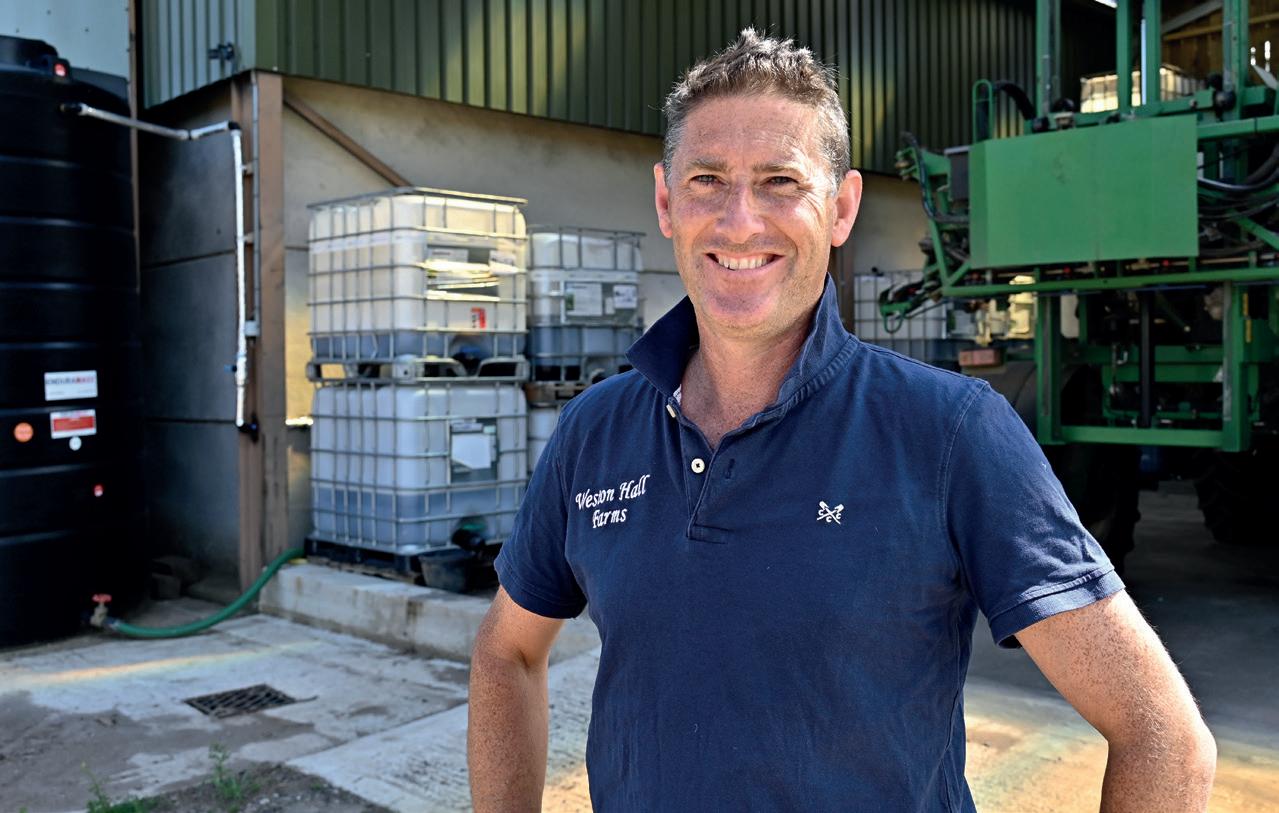
Applying for a STEPS grant is simple 1
Find out if your farm or land is in a priority catchment stwater.co.uk/STEPS
Deadline: 31st January 2023
This round of the grant scheme focuses on key water quality options. Applications are competitive, and will be prioritised on how they address the key pollutants in the catchment.
2 4
Contact your Agricultural Advisor to arrange a visit to discuss what is best for your farm or apply online stwater.co.uk/steps
*Applications are subject to eligibility criteria. Terms and conditions apply.
3
Contact your local Agricultural Advisor for support with your application and the priorities in your catchment.
Application window is now open – the scheme is competitive and closes on 31st January 2023.


A£4.8m government-funded project aims to increase the amount of biomass crops grown by UK farmers.
Funded by the Department for Business, Energy and Industrial Strategy (BEIS), the new scheme will be launched on 7 February at Low Carbon Agriculture Show at the National Agricultural Exhibition Centre, Stoneleigh Park, Warwickshire.
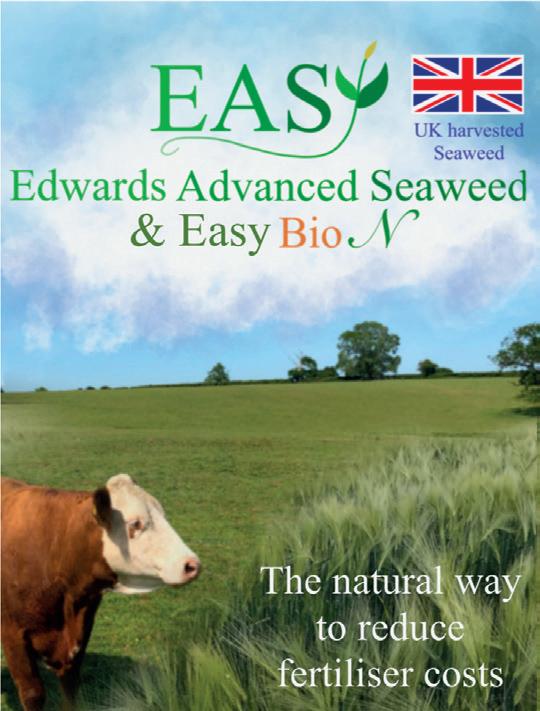




Biomass Connect will showcase best-practice and innovations in biomass feedstock production at sites across the UK and through a biomass Information hub, said project leader Jeanette Whitaker, who is also a scientist at the UK Centre for Ecology & Hydrology (UKCEH).



The project is about supporting land managers to plant more sustainable biomass crops, said Dr Whitaker. “Our
project will act as a focal point for the biomass industry, supporting the expansion of sustainable biomass pro-
quire significant changes in agricultural land use over the coming decades.”

Launching the initiative at the Low Carbon Agriculture event was a good opportunity to raise the project's profile – and discuss the challenges for the biomass sector at an event attended by individuals and organisations focused on decarbonising agriculture.
Producing sustainable biomass is seen as crucial to meeting the UK's net zero. The project launch at Low Carbon Agriculture will include a dedicated biomass exhibition so farmers can speak directly with industry suppliers.
The two-day event will include a conference session examining the role biomass has to play in the UK's energy security and net zero plans. This will be chaired by Patricia Thornley, director of the Energy and Bioproducts Research Institute.
Held in partnership with the NFU and the Country Land and Business Association, Low Carbon Agriculture show will also feature workshops, an exhibition, test drives of low emission vehicles and machinery and demonstrations of the latest agri-technology. For project details, visit www.biomassconnect.org.

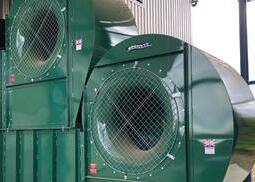



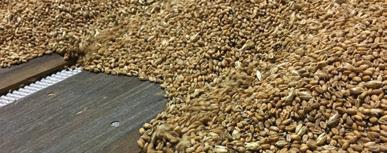
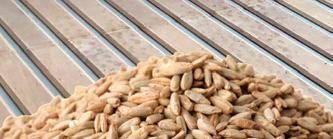



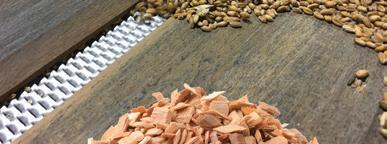


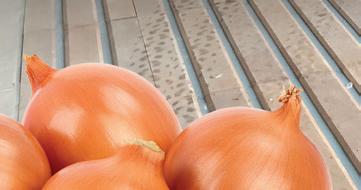



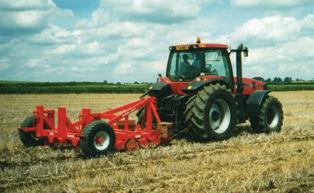
An agronomist is crediting a simple test with providing him with the knowl edge he needs to give growers concrete recommendations for treating their crops.
UPL technical manager Stuart Jackson started using SwiftDetect in 2021. His team decided to use SwiftDetect while they were developing fungicide programmes and trial ling new products to determine how best to use them.
The patented technology behind SwiftDe tect can determine the how much disease is in a crop, with results in one business day. It can test for light leaf spot in oilseed rape, Sep toria, yellow rust, brown rust and mildew in wheat and ramularia in barley.
“Traditionally, when we carry out a trial, we make a visual assessment of the disease present at the time of the application,” says Mr Jackson. “But that would only tell us what was already visible if something had already appeared on the surface of the leaf.
“It never gave us an indication of if there was any latent infection – if disease is going through its lifecycle within the plant and not expressing any visible symptoms on the surface.”
Before discovering SwiftDetect, Mr Jackson would need to make an educated guess about the health of a plant, as there was no way of knowing for sure.
“Trying to decide if the product you applied was giving you protective or curative activi-
ty at a certain point was really hard and it was impossible to provide a definite scientific answer as to whether it was or it wasn't,” he says.
Since using SwiftDetect, Mr Jackson says he has stopped relying on assumptions and now knows with certainty if a product was applied in a protective or curative scenario.

“SwiftDetect gave us a better indication of what we were doing in our trials and meant we could provide better recommendations to growers in terms of how we should use the product,” he explains.
Using SwiftDetect helps reduce the amount of product used – good for the farm

business and for the environment.
“You can answer the question: “Do I need to spray today?” with certainty if you discover there is no infection in a plant,” says Mr Jackson.
“It also gives us the opportunity to look at the chemistry being used and decide if something curative is needed to clean up latent infection, or if a protective product could be used because there isn’t any infection present in the leaf.
“As an agronomist, it gives us the opportunity to tailor our recommendations so that a grower has all the information they need to make an informed decision.”








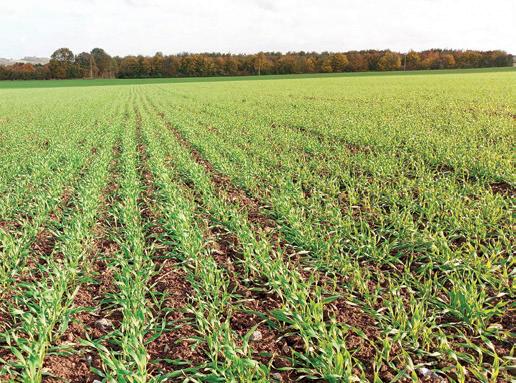

Winter oilseed rape establishment is good across the UK – despite later sowing than many growers planned, suggests a survey.
A marked increase in plantings confirmed by the late October survey suggests a 10% increase in the area of crop coming into spring 2023, according to the fourth annual Dekalb national establishment poll.
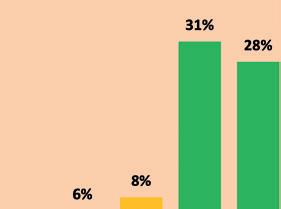
Reports from over 230 growers responsible for 25,000ha of oilseed rape across the UK’s main arable areas suggest that little more than 6% of this year’s crop is likely to be the subject of breeders’ establishment scheme claims for failure.
More than 75% of growers rate this season’s crop at 7 or more for establishment on the poll’s standard 0-10 scale, with just 8% rated less than 5.

“Barring any major winter or early spring issues, these findings point to an overall crop survival to flowering similar to the past two years at around 90% of plantings,” says Bayer seed campaign manager and poll co-ordinator Lizzie Carr-Archer.

“This is a vast improvement on the 67% survival to spring we recorded in the last particularly challenging establishment season of 2019/20. And it’s certainly not what large numbers of growers were expecting after such a bone-dry summer.”
With almost two thirds of growers reporting very or fairly dry conditions at sowing –and only just over a third considering them at least reasonable – this year’s poll shows moisture levels at sowing were actually worse than 2019.

Together with sowing delays prompted by the very dry conditions, this left many crops particularly open to the normal late August/early September cabbage stem flea beetle challenge.
Although higher than the past two years, flea beetle pressure was well below the level of 2019, with only just over 20% of growers reporting substantial and intense challenges from the pest compared to more than 50% three seasons ago.
Over 80% of growers reported receiving enough rainfall between sowing and late-October. This almost certainly accounts for the very much better position of the current crop

going into winter.
“As ever, our study shows considerable differences between the regions in flea beetle pressures and moisture conditions both at and after sowing,” says Ms Carr-Archer.
“Even those areas faring worst in terms of pest pressure and dryness, though, have markedly better average establishment scores than 2019.”
Unsurprisingly perhaps, the much drier August led to a clear reversal of the trend to earlier drilling recorded over the past three seasons, with nearly 60% of crops sown after 20 August against 45% in 2021.
“Unlike recent years too, it also meant that earlier sown crops didn’t necessarily establish better than those going in at a more traditional late-August timing, despite what continue to be higher flea beetle pressures at this time.
“This reinforces the importance of the balContinued on p19

Crops are performing well, says Lizzie Carr-Archer




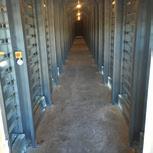
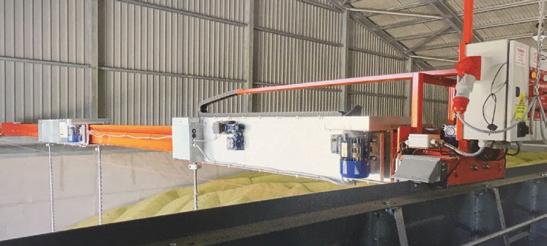






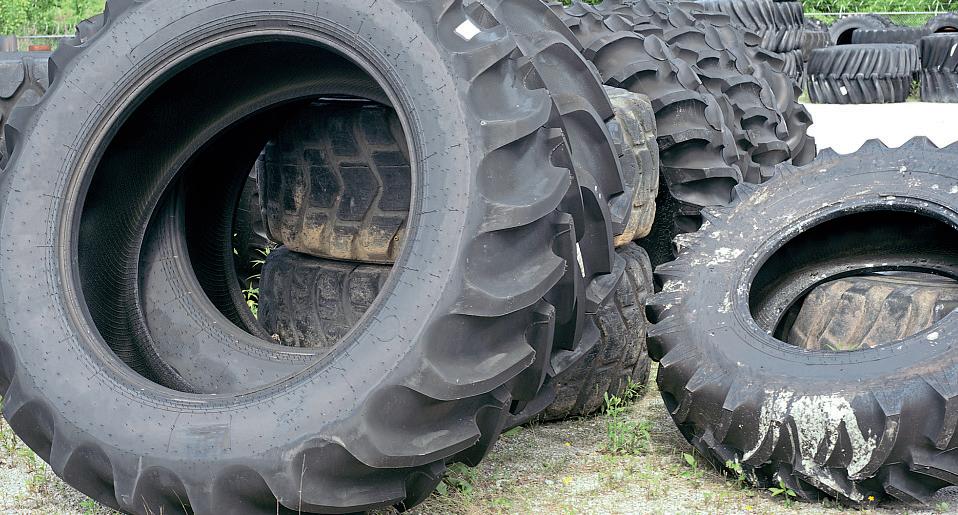




































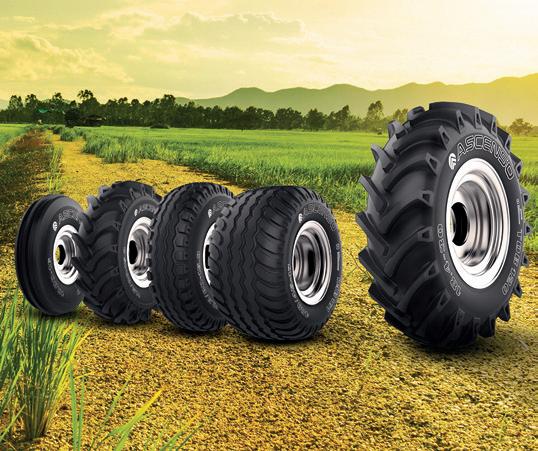


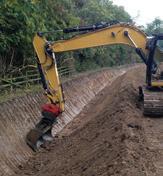



Continued from p16
ance between pest pressure and moisture conditions in determining rape establishment. Our latest data show flea beetle pressure continues to have a greater impact on establishment than soil moisture.
“Crucially too, they underline that the real clincher in moisture terms is rainfall after sowing rather than conditions at drilling. The difference in average establishment score between the extremes here was almost twice that between the extremes of moisture at sowing.”

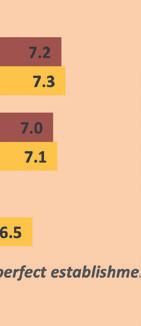
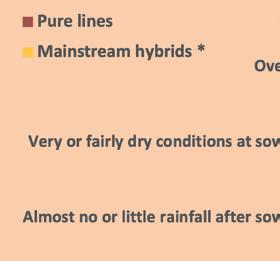
With drilling conditions so dry, Ms Carrarcher says it is no surprise that this year’s poll shows few overall differences in establishment success either between different establishment regimes or variety types.

But a noticeable gap was evident between hybrids and pure line varieties where crops were under the particular challenge of less than adequate rainfall after sowing. Together with lower levels of re-drilling, this underlines the benefits of modern hybrids.
“Greater flea beetle pressures this season inevitably led to greater insecticide use at establishment than in recent years,” says Ms Carr-Archer. “Even so, it’s encouraging to more growers deliberately avoiding insecticide spraying.
“This season’s poll gives particular confi-










dence to those not letting the very dry early autumn put them off sticking with or increasing their winter OSR growing for 2023 – although there’s a lot of water to go under the bridge yet.”
Having said that, the importance of establishment quality to crop performance and the extent to which later sowing reduces the flea beetle threat means there is likely to be a substantial year-on-year increase in the crop area going to harvest.

“After all, even in the particularly damaging CSFB season of 2019/20 growers only recorded an average crop loss of around 6% between early spring and harvest,” says Ms Carr-Archer.
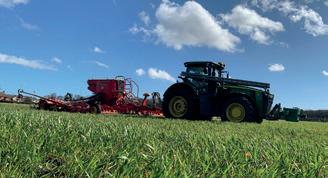


This is a vast improvement in survival
“
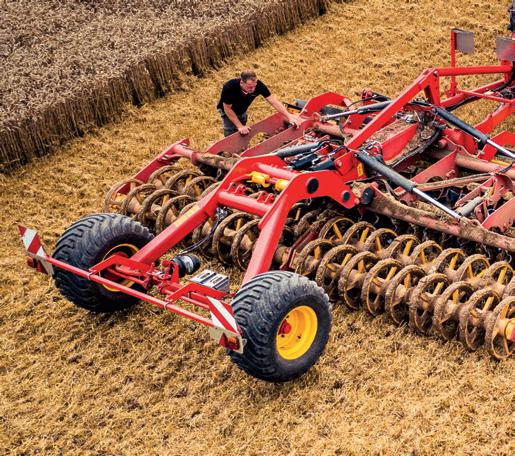
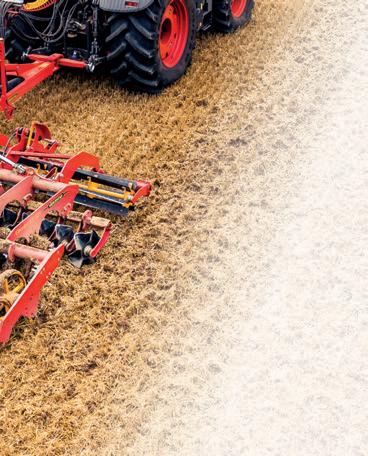




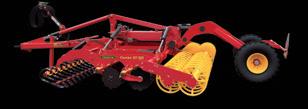





Cereal growers deciding when to stop planting winter wheat so fields can be put into spring barley may need to factor in continued high fertiliser costs.
Last year’s kind autumn saw good progress with winter wheat drilling. But as drilling shifts later, there comes a point when deciding to drill a spring crop instead becomes more attractive, says Syngenta seeds portfolio marketing manager Kathryn Hamlen.
Typically, this decision revolves around factors such as the declining yield potential of winter wheat with later drilling and concerns about crop establishment, says Mrs Hamlen. But high fertiliser costs mean the lower nitrogen fertiliser requirement of spring malting barley has increasingly become part of the equation.
“Clearly, fertiliser doses need calculating on a field-by-field basis, taking into account factors such as location restrictions, soil type and previous crop.”
Trials have indicated that the optimum nitrogen fertiliser dose for the popular spring malting barley variety Laureate is 125-150 kg/ha when targeting brewing or 100-125 kg/ha when
targeting malt distilling.
This was based on achieving a good yield while not exceeding a grain nitrogen content of 1.75% for brewing or of 1.65% for malt distilling. And it is much less than the 200kg/ha of nitrogen fertiliser that might be applied to a winter feed wheat crop,
Although by far the vast majority of winter wheat has now been drilled, many fields of winter wheat are planted later, after sugar beet and potatoes – typically involving increased difficulty preparing seedbeds during wet winter weather.

Seed rates also typically need increasing with later drilling to account for reduced plant establishment and tillering, and different winter wheat varieties have different latest sowing dates based on their vernalisation requirements, which growers need to check.
“If opting to grow spring malting barley, look for a variety that has shown consistent performance and that offers flexibility to target brewing and malt distilling markets to help
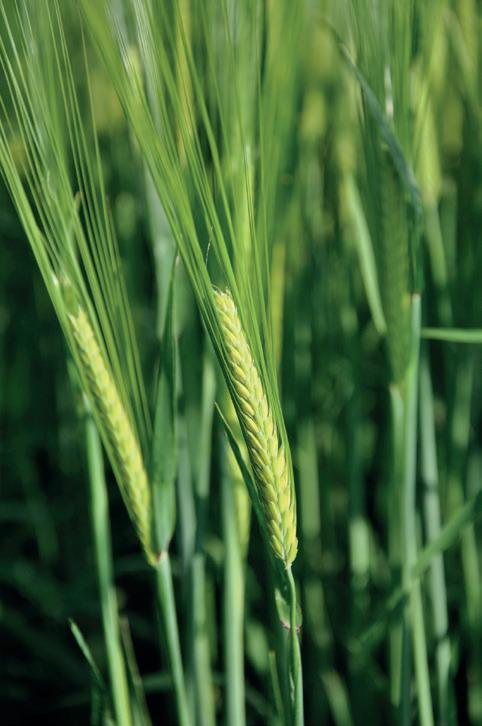
manage risk, such as Laureate.”
“With any cereal crop, sowing into good seedbeds is also vital, and spring barley is no exception. But spring barley has a wide drilling window – it can be sown through to April in appropriate situations, allowing plenty of time for preparing seedbeds.
“In suitable situations, it is also possible to drill spring barley in December, which can give a strong crop with higher yield potential. However, this increases disease risk, and it doesn’t suit every situation, so it may be better to delay into the New Year to allow soil and weather conditions to improve.
“Whichever crop is planted, be aware that certain restrictions on the use of crop protection products may apply, not only based on whether the variety is listed as a winter or spring variety but also depending on the crop’s
“This, along with fertiliser dose, is worth seeking qualified advice on.”





pring bean variety Lynx from LS Plant Breeding leads the latest PGRO Descriptive List – joining varieties Ghengis, Victus, Macho, Vertigo and Yukon from the same breeder.






The list shows that low vicine/convicine (LVC) variety Victus is now closing the yield gap with conventional varieties, while Yukon continues to combine the earliest maturity with highest downy mildew on the list.
ing yellow pea with high thousand seed weight and a good set of agronomic characters. LSPB’s Akooma marrowfat pea is joined by new addition Takayama.
Both varieties bringing a significant yield boost over the older marrowfat varieties on the list, says LSPB pulses product manager Michael Shuldham.

Winter bean Pantani remains the earliest variety on the list with high standing ability matched with the shortest straw. Carrington green pea is again the top yielding combining pea on the PGRO DL along with newly added Butterfly, Stroma and Bluetime.

Orchestra is a very high yield-


“Our pulse varieties are a strong constituent of the new PGRO 2023 Descriptive Lists and show the continuing improvement of pulse varieties for yield, agronomic characters and marketability,” he says.

“All our pulse varieties, both continuing and added to the new list, as well as promising candidates in our pipeline, demonstrate our continuing commitment to developing the UK pulse crop in the future.”

































Crop plots are set to come through winter well at the 2023 Cereals site – which will showcase many new varieties.
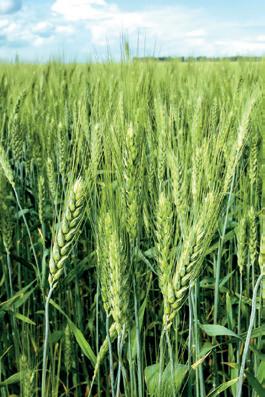
Exhibitors visited the 2023 Cereals site before Christmas to examine the crop plots at Thoresby Hall, Newark. Despite torrential rain, the autumn-drilled plots look a picture, said arable project manager Jonathan Backhouse.
“Everything about the new site is positive,” he said. “It’s easily accessible, very picturesque and has great facilities. The easy-working sandland makes for straightforward crop establishment and a free-draining show site.













“However, the flip-side of this means we could find ourselves watering regularly if we see drought-like conditions again this spring – fortunately Thoresby has excellent infrastructure in place for irrigation.”




































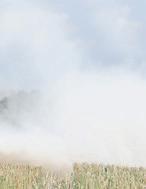







The plot area is larger than last year, with both returning and new exhibitors. Many plots are being overseen by Ceres Rural agronomist Will Davies, who is pleased with how well they have grown away since autumn.
“Cereals is a good opportunity to see all of the varieties in one place and grown under the same conditions. You get an idea of what they look like under real conditions, not just reading statistics from the Recommended List.”

KWS has four new winter wheats, two new hybrid oilseed rape varieties and a new hybrid winter barley, which is currently the highest yielding in NL2 trials. Spring milling wheats KWS Ladum and Alicium will also be in the ground. “There are no new high quality winter milling varieties, so it’s good to have some new high yielding spring varieties coming through,” says KWS technical specialist Olivia Potter.

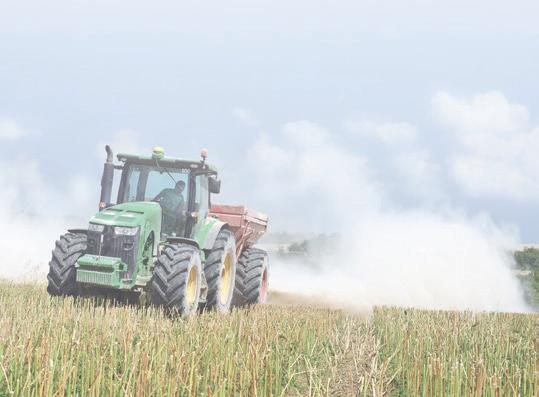
A mix of old and new varieties will feature on the DSV stand, including Champion winter wheat and its descendant Oxford, which has a more consistent yield, stiffer straw and good resistance to both yellow rust and orange wheat blossom midge.

Farmers can view a range of Clearfield oilseed rape varieties, including Beatrix, a new unnamed high-yielding variety, and the hybrid Dolphin.
Natural England will focus on conservation mixes, with enhanced autumn and winter bird seed cover, pollinator mixes, and cover crops – including a clover living mulch for undersowing cereals, maize and oilseed rape.














Oilseed rape varieties Vegas, Murray and Flemming are new to the Recommended List, with some unnamed LSPB varieties still in national listing trials. Pulses include high-yielding pea Carrington, and early maturing spring bean Yukon.

Cultural pest management will be PGRO’s focus this year, demonstrating the trials work it has been carrying out for the past two years. It will feature vetch, lucerne and winter bean trap crops, sown alongside spring beans to attract damaging beetles.
In a first for Cereals, one set of plots is being taken through to harvest as a working replicated trial. It will compare applying Consortium Plus, a mix of beneficial soil microbes and biostimulants, with or without foliar nutrients and biostimulants
through the season. The control will receive a standard fertiliser programme.


Visitors will have a rare chance to see some of the Watkins lines of wheat – grown from samples collected in the 1920s – in the ground at the Rothamsted plot. The organisation is also looking at herbal leys, cover crops and reduced tillage to build soil carbon.
Growers looking for something a bit different will find a range of alternative crops at Premium Crops’ site, including spring and winter linseed, high Omega 3 varieties, high erucic acid rapeseed, high protein spring wheat, naked oats and spelt.

Foliar nutrition and micronutrients are becoming increasingly
popular, and Bionature will be growing oilseed rape and winter wheat trials treated with varying rates of Delta K liquid fertiliser and Tiptop 20.20.20, compared against standard fertiliser treatments.
Seed treatments are another area of interest, and AminoA is growing oilseed rape, triticale and winter wheat plots treated with STAART versus untreated plots. The firm is also looking at the impact of artificial nitrogen on soil microbiology.

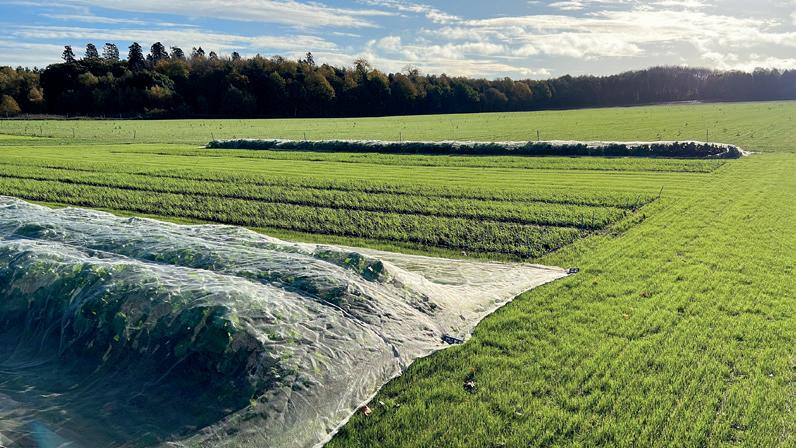
The ever popular birds and bees pollination mix will provide the photogenic backdrop to the Syngenta Sprays and Sprayers arena.
Syngenta’s stand will also feature low and no-till cultivation trials, a new BYDV tolerant hybrid barley and a new winter milling wheat.
The 2023 Cereals event takes place on 13-14 June at a new location – the Thoresby Estate, near Newark, Nottinghamshire.
The 4,860ha estate has been in the Pierrepont family since the 1590s. Some 3,400ha is farmed in-hand, with the remainder being a mixture of commercial forestry, natural forest and let farms.
“We have a rotation of wheat, barley, maize, oilseed rape, beans, potatoes, carrots, onions and sugar beet,” says landowner Gregor Pierrepont.
There are also 120 Longhorn cows plus followers, 250 Hebridean and Greyface Dartmoor sheep and 1100 Mule crosses.
Cereals is donating 50% of ticket sales to charity – the Multiple System Atrophy Trust, chosen by the hosting family. “It’s very close to our hearts as it was set up by my aunt Sarah, who was afflicted by this very rare disease,” said Mr Pierrepont.
For full details, visit www.cerealsevent.co.uk.
•
• Avoid sulphonyl urea carry-over
• Watch out for persistency in soil
Growers should consid er spring spray pro grammes carefully to avoid carry-over of any residual activity from sulphonyl urea (SU) herbicides, say agronomists.
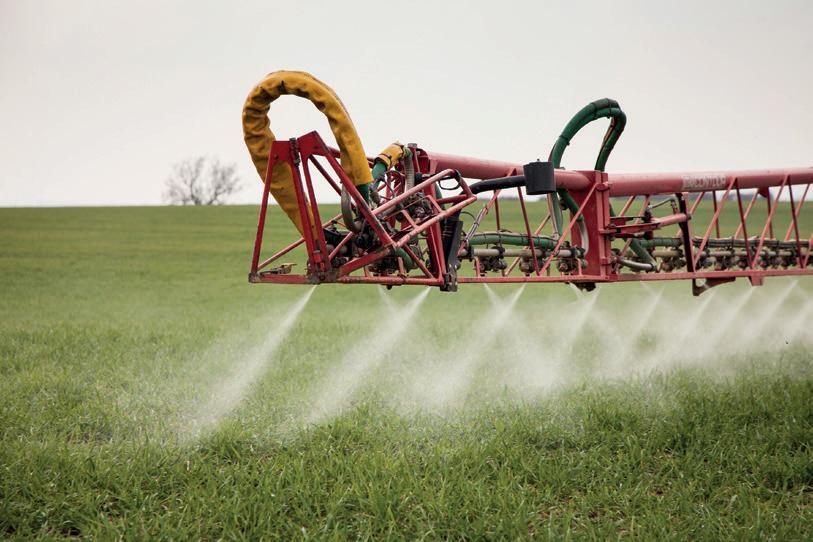
“This is particularly the case for those growers thinking about increasing the areas of cover crops they will grow next summer or for those thinking of coming back into or extending their oilseed rape acreage, says Dick Neale, technical manager for Hutchinsons.
“The value of both crops is high so it’s best to avoid compromising their establishment if avoidable. This puts more significance on how weed control is built up in the spring to avoid residual herbicide activity carrying over.
“It doesn’t mean holding off controlling the difficult weeds, but look at how ‘softer’ sulphonyl ureas (SUs) could work while still controlling the weeds without the long tail of residuality. It’s the fine details that will matter.”
Grassweed contacts such as SUs Hatra (mesosulfuron-methyl and 2g/L iodosulfuron-methyl-sodium) and Pacifica Plus (30g/kg mesosulfuronmethyl, 10g/kg iodosulfuron-methylsodium and 50g/kg amidosulfuron) can have long lasting effects in the soil.
Growers should consider this if planning to incorporate them in spring herbicide programmes where cover crops or oilseed rape is following, says Mr Neale.
“We used to apply these products in the autumn and issues rarely occurred, but as their efficacy on blackgrass has declined they are now increasingly used to tackle wild oats, bromes and ryegrass with a spring application.”
“Wild oats can emerge anytime from February to April and it is when herbicides are applied later to these crops that issues can be seen in following covers and oilseed rape.“
in Ally Max (metsulfuron methyl and tribenuron methyl), cover a whole range of weeds. It has an extended growth stage on its label so is a popular option – but it is also very persistent in the soil.
Mr Neale suggests an alternative to this would be to use tribenuron methyl and thifensulfuron as a mix with no metsulfuron.
“Although there is a reduced weed spectrum there is nowhere near the same levels of persistence. Other options would be products with actives containing florasulam and fluroxpyr or florasulam and hauloxyfen-methyl.”
Mr Neale says it is important to avoid stacking herbicides with the same active as it is easy to reach damaging levels this way without realising it.
“You want to avoid levels of DFF building up as it is very residual and can form a pencil thin line in the top of the soil,” he explains. “When a new crop meets this it can really knock the vigour out of it.
“It’s not difficult for this to happen without realising it. For example, if a pre-emergence application of Liberator (flufenacet and diflufenican) goes on at 0.6l/ha this contains 60gms of DFF.”
“If using a split label rate then it is possible to go back on post-emergence six weeks later, of which is perfectly legal and safe to do, with 0.3l/ ha (30gms DFF) making that a total of 90gms DFF.”
dimethalin) is also being used in the programme, DFF is often added to this. That adds in another 50gms of DFF which if then followed up with 0.6l/ ha Liberator takes the amount of DFF up to 110gms.
“As its been dry it’s possible that one of the applications hasn’t worked, so blackgrass might be starting to come through, which means another 0.3l/ ha Liberator (30gms DFF) is added to the mix, which would bring the total amount of DFF up to a total of 140gms.
“This shows how important it is to scrutinise the partner contents of all products and use product sequences that reduce the overall loading of persistent actives. For example, flufenacet can be sourced with picolinafen or pendimethalin and as a straight active.”
When establishing cover crops within an regenerative farming situation, experience shows that everything has to be in your favour in the summer to get covers away well, says Ed Brown, head of agro-ecology at Hutchinsons.
Adequate moisture, timely harvest, effective establishment technique are all imporetant, says Mr Brown. We can’t guarantee that all of those come together every year, so we don’t need herbicide residues adding another potential impact on success.
“It’s important that all cultural controls should have been employed meaning that a winter crop is only considered when the grassweed burden is at a manageable level and doesn’t require huge stacks of residual, therefore avoiding the DFF issue.”

How to avoid residual herbicide carry over
The value of both crops is high
“


Afree nutrient calculator is being made available for growers and agronomists this coming season – thanks to fertiliser manufacturer Yara.
Making the Atfarm nutrient management platform completely free of charge will encourage more farmers to take full advantage of Yara UK’s nitrogen fertiliser portfolio, says managing director Jari Pentinmaki.
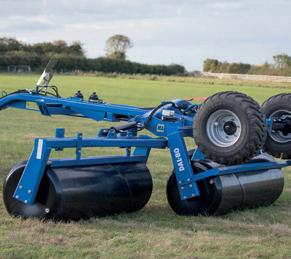

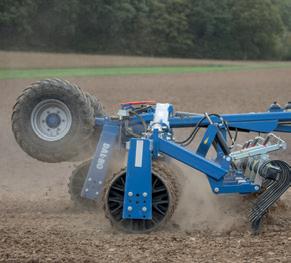
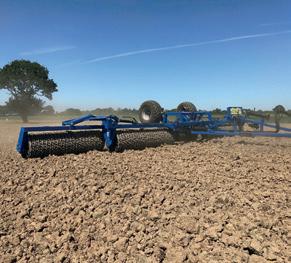
The Atfarm digital platform helps farmers apply nitrogen more precisely. It uses satellite images to monitor crop growth, enabling farmers and agronomists to create variable rate application maps in just minutes.




Farms are also able to use Yara's Nitrogen Tester BT to get field specific nitrogen recommendations for their cereal crops, as well as monitoring the leaves nitrogen status as spring growth progress.
Making Atfarm free follows feedback from farmers using the technology – and the improvements they’ve
seen in nitrogen-use efficiency as they strive to get better value for money in the face of high fertiliser prices.
“By making use of the digital tools, farmers can save on fertiliser costs without compromising yield and quality, while at the same time benefitting the environment,” explains Mr Pentinmaki.
“We want to do everything we can to support UK farmers. We hope that by encouraging farmers to explore the smart tools available to them, it will bring both financial and environmental benefits.”
NFU combinable crops board chairman Matt Culley welcomed the news. Raising nitrogen use efficiency on farms was a winwin for farmers who needed to buy less fertiliser – and for the envi-
ronment too.
Crops perform better and it is a relatively simple step to take, said Mr Culley. “The fact that it also contributes to a lower carbon footprint is something that will inevitably gain in importance as carbon markets and supply chains adjust.”
Yara says the free tools will save farmers money






Bigger yields – especially in bar ley and oilseed rape – are prom ised by the latest varieties rec ommended by the Agriculture and Horticulture Development Board.
The latest Recommended Lists for cereals and oilseeds 2023/24 include a relatively small number of new va rieties – but among them are the first new winter malting barley and winter oat varieties for several years.
“We’ve seen relatively few new vari eties on the lists this year,” says AHDB list manager Paul Gosling.
“Several years of plant-breeding advances mean the recommendation bar is set high. Relatively few candi date varieties performed better than the best-listed varieties to secure a rec ommendation.”
The winter barley list includes the first malting variety added since 2018. Buc caneer, from Saaten Union, offers a sig nificant yield increase over the estab lished two-row malting varieties, Craft and Electrum, alongside good disease resistance.

Two new two-row and one new sixrow hybrid varieties add strength to winter barley feed yields compared with current favourites. The two rows are Bolivia, from Agrii; and LG Cara velle, from Limagrain.
The latter offers a particularly high yield in the east region and a good specific weight. The new six-row hybrid SY Nephin, from Syngenta, is notable for its disease resistance rating of 8 for rhynchosporium.
Six new spring barley varieties are under evaluation by the Malting Barley Committee – three for brewing, two for brewing and malt distilling, and one for malt distilling. These offer improvements in yield or disease resistance.
The spring barley list sees feed variety Hurler added. Bred by Secobra and available through Agrii, high yield is its standout feature, says Mr Gosling.
fers good yield and grain quality. New spring oat variety RGT Vaughan also features good grain quality.
For winter wheat, the latest RL includes one new UKFM Group 2 breadmaking variety, KWS Ultimatum, and one new UKFM Group 3 biscuit-wheat
The 2023/24 recommended lists for wheat, barley, oats and winter oilseed rape can be accessed online –alongside updated descriptive lists for spring oilseed rape, spring linseed, winter triticale and winter rye. For details, visit www.ahdb.org.uk
variety, RGT Wilkinson.
The list also adds two new feed varieties for the East/West region: hard-textured Oxford, from DSV, and soft-textured LG Redwald. The latter requires careful lodging management.
There is also a new soft Group 4 for the North region, KWS Zealum, which is likely to be of interest to the distilling market.
Three new varieties have been added to the spring wheat list, offering good grain quality and yields.
They are UKFM Group 1 KWS Harsum, which has particularly high yield; and UKFM Group 2 KWS Alicium and KWS Lightum.
to access latest recommended listsBuccaneer is the first malting barley added to the list since 2018
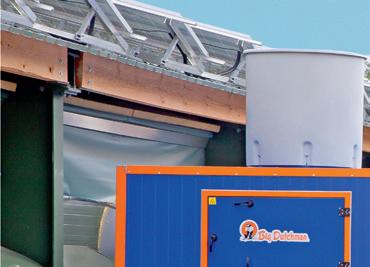
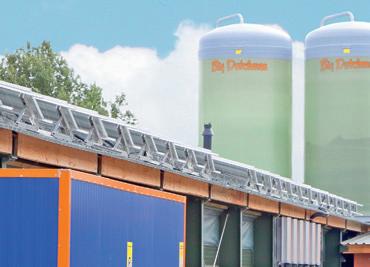


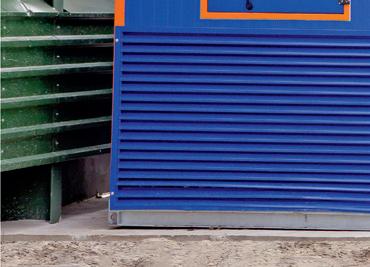


Meat processor ABP has announced a £1.5m investment to help 350 beef and sheep farmers to become more sustainable.
Called PRISM 2030, the new iniaitive will help participants improve their carbon footprint and sustainability over 2-3 years. It will include assessment of carbon footprint, soil health, water use and support biodiversity creation and resource efficiency.
Support from Harper Adams University and the Andersons Centre will give farmers direct access to the latest environmental innovations.
A sustainability grant will also be available, alongside peer-to-peer learning and expert advice throughout.
ABP sustainability director Dean Holroyd said: “British red meat production is among the most sustainable in the world, but we can and must do more because as an industry, we are well placed to be part of the climate solution.”

“We want to build on this position of strength, and while PRISM will mean direct support for those in our supply base who qualify for the programme,
all of the outcomes will be made available to the wider industry.
initiative will play a part in helping beef and sheep farmers across the country become the global leaders in sustainable meat production.”
NFU livestock board chairman Richard Findlay said the initiative would help establish a baseline for farm based carbon and wider sustainability data, before delivering wider support.
“All of this helps evidence and reinforce with primary data the strong sustainability credentials where British livestock farmers sit within a world
AHDB’s successful We Eat Balanced campaign returns to TV screens over Christmas to showcase the benefits of red meat and dairy as part of a healthy and sustainable diet.
Adverts featuring nine-year-old Nancy and her grandfather reached over 32m adults on channels including ITV, Channel 4 and Sky from Boxing Day – as well as being available to watch on YouTube.
The campaign returns to social media from 3 January 2023 with 41m opportunities for a younger target audience to see myth busting content on
Facebook and Instagram focused on healthy eating and sustainability.
Major supermarkets will once again be promoting the brand in meat and dairy aisles, with 8m onpack stickers, milk bottle branding and banner adverts on retailer websites, says AHDB marketing director Liam Byrne.
“As the cost of living increases, more people will become reliant on lower cost foods which tend to be calorie dense and nutrient poor, further increasing the risk of diet-related disease. Our aim
“The NFU has the ambitious goal of reaching net zero greenhouse gas emissions across the whole of agriculture in England and Wales by 2040, so I welcome this investment from ABP. Livestock producers need initiatives and support like this to help us get there.”
The collaboration with Andersons is led by partner and senior research consultant Michael Haverty. He will focus on carbon assessments as well as other sustainability benchmarking.
Input from Harper Adams is being led by Professor Jude Capper, who will indicate the areas each producer could be focusing on over the duration of the project to achieve the biggest gains.
is to shine a spotlight on the positive choices consumers can make.
“Milk is such an affordable and nutrient dense food, while meats like beef, lamb and pork contain up to nine essential vitamins, including Vitamin B12, which you won’t find naturally in vegetables.
“Our aim is to give more consumers the confidence that by choosing red meat and dairy from Britain, they are choosing nutrient dense produce with one of the lowest carbon footprints and highest welfare standards in the world.”
Processor ABP wants more sustainable beef and lamb production
We can and must do more
“
•
•
•
Grants of up to £250,000 are available for farmers to im prove their slurry storage –helping to prevent water and air pol lution and make the best of organic nutrients.
Defra says around half of slurry stores in England are not fit-for-pur pose, forcing farmers to spread slurry when there is no crop need, wasting valuable fertiliser and causing pre ventable air and water pollution.
This means many farms can end up failing to comply with their legal ob ligations for storage and spreading of slurry. The Slurry Infrastructure grant makes some £13m available for livestock farmers to build six months of slurry storage capacity.
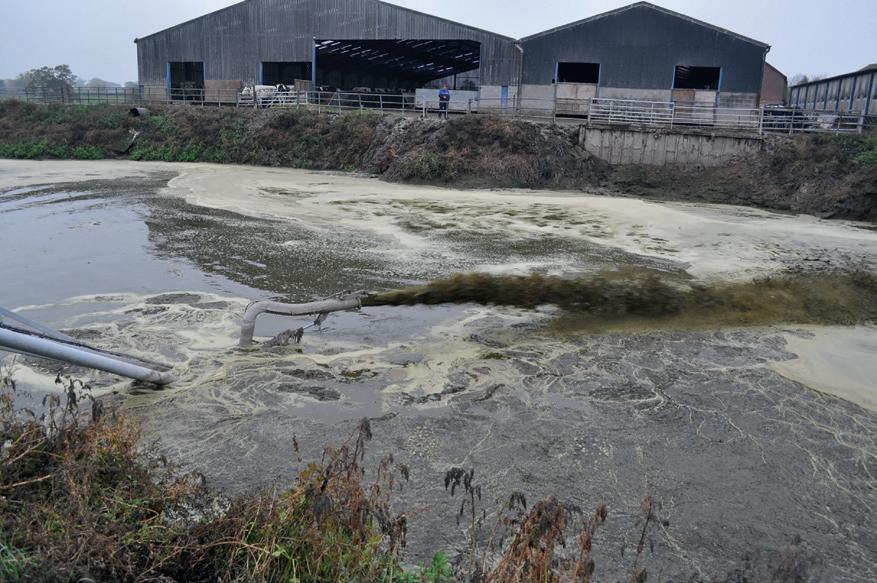
Investing in good slurry management is an important step that farmers can take to protect the environment, says Defra. Slurry is a valuable source of nitrogen, phosphorus and potassium which can be used to grow crops, it adds.
Farmers can apply for grants of between £25,000 and £250,000 towards the cost of slurry stores, covers and equipment. Grants can be used to build, replace or expand storage – including for lagoons, steel and concrete ring tanks and large slurry bags.
Defra farm minister Mark Spencer said: “We know livestock farmers want to invest in slurry systems that support quality food production and protect the environment, but many are put off by high infrastructure costs and difficulty accessing finance.
Farmers interested in the first round of the new Slurry Infrastructure grant scheme have until 31 January to check they are eligible and to submit preliminary details.
Strutt & Parker farming consultant Alice Johnson says: “This scheme provides farmers with an opportunity to get a grant covering around 50% of the estimated costs of investing in slurry storage.
Farmers can calculate their slurry storage requirements using the AHDB’s Slurry Wizard tool They can they check they are eligible for a grant using the Slurry Infrastructure grant online checker.
Grants available range from £25,000 to £250,000. Farm businesses will be paid a fixed contribution towards the equipment they need based on a standard amount, explains Ms Johnson.
Funding is not available for the demolition
and removal of old stores, repairs and maintenance of existing stores or second-hand equipment. Any items bought using grant support must meet the exact specification set out in the guidance notes.
The Rural Payments Agency will review all projects once the online checker closes and produce a shortlist of projects, with preference given to applications in the priority areas it has set for the first round of the scheme.
Priority places can be found across England but farmers are encouraged to apply for the grant even if they are not currently located in a priority area, as the level of the demand for the scheme is not yet known so funding may well be available anyway.
There will also be opportunities to apply for further rounds of the scheme and Defra has indicated the priority areas may change between different rounds.



















Defra's slurry infrastructure grants are primarily aimed at reducing the contribution of slurry to greenhouse gas emissions.
Bag tanks which can help reduce emissions are supported by the grant funding and offer a complete solution to storing, agitating and managing slurry, says John Tydeman of slurry specialists Tramspread.
“Depending on location, bag tanks can often be installed without planning permission. The tanks sit low to the ground, have capacities up to 7500m³, feature integral stirrers and suction or delivery pipes,” says Mr Tydeman.
“We import and install Albers Alligator bag tanks which only need groundworks similar to a shallow lagoon with sloping
sides and base. This design enables the bag tank to be easily filled and fully emptied at any time.”
The grants cover the installation of above ground storage such as steel and stainless steel tanks. These offer farms with less space the opportunity to increase slurry storage and in some cases incrementally add to the size of the tank.
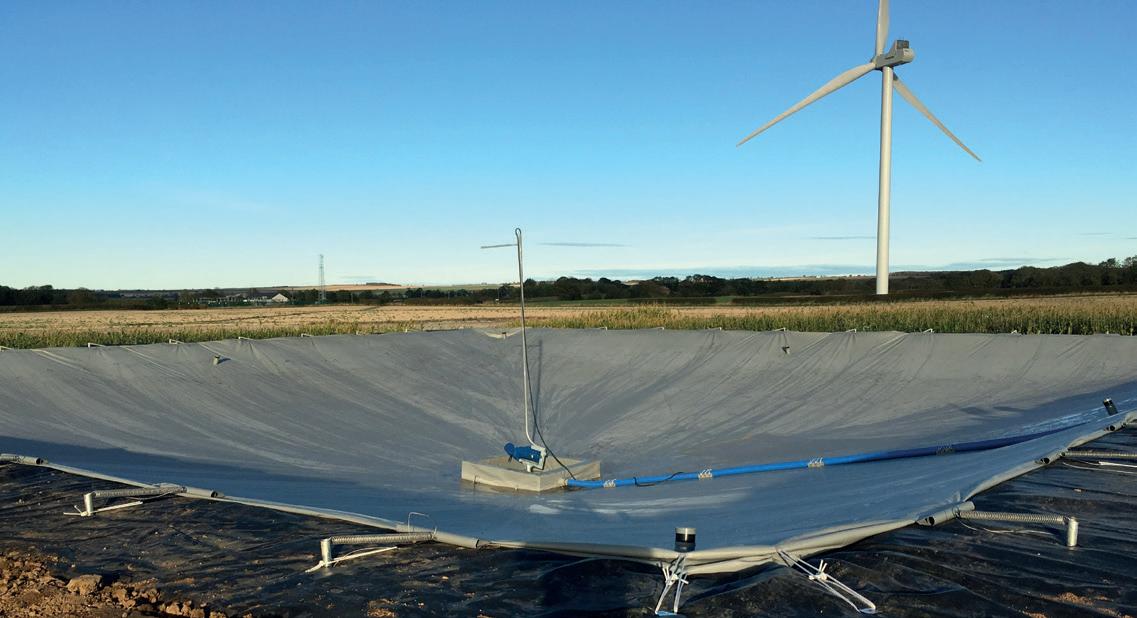
“Stallkamp tanks can be extended using additional stainless steel rings. A more costeffective option is the Agritank. Both are covered by the slurry infrastructure grant. However, unlike a bag tank, both will require planning permission.”
All storage tanks must have an imper-
meable cover which will add to the cost of steel tanks that require a textile or floating cover. The grant will also fund items needed for the basic functioning of new or expanded stores, such as reception pits, pumps and agitators.
“Textile covers can be costly whereas a floating solution like Hexa-Cover will be considerably cheaper.
“While floating tile covers are not covered by the grants, it may still be a cheaper option for some farms,” says Mr Tydeman.
A fixed contribution towards the cost of slurry storage will be calculated using Defra's standard costings which see £19.27 per m³ contributed for a bag tank with liner and £31.50 per m³ for a steel tank.
Continued from p32
“The Slurry Infrastructure grant will tackle this, helping farmers to invest in future-proof slurry storage that supports thriving farms while cutting pollution and allowing nature to prosper.”
When badly managed, the nitrate and phosphate in slurry end up in rivers, streams and the sea. This can cause harmful algal blooms which block sunlight and deplete oxygen, causing damage to natural habitats and wildlife.
Slurry also releases large amounts of ammonia into the atmosphere, which returns to the land as nitrogen. The build-up of nitrogen causes
certain plants to thrive, limiting species diversity and harming vulnerable habitats.
Enlarging and covering slurry stores will help reduce the 60% of nitrate pollution, 25% of phosphate pollution and 87% of ammonia emissions that come from agriculture. It will also help farmers to cut costs on artificial fertilisers.
Rural Payments Agency chief executive Paul Caldwell said: “Improving slurry storage offers farmers an opportunity to reduce the environmental impact of their businesses and cut input costs.
“We hope this scheme, which is the result of months of work with farmers and industry, will receive a significant number of applications for this first and future rounds.”
The grant builds on support Defra already provides for slurry equipment and best practice through the Farming Equipment and Technology Fund and Countryside Stewardship. The initial deadline is 31 January 2023.
All applicants will be told whether they have been shortlisted for full application. Depending on demand, applicants will be prioritised in areas where action is most needed to reduce water and air pollution from agriculture.
For details, visit defra.gov.uk.
We know farmers want to invest
“Bag tanks can help reduce greenhouse gas emissions

Farmers should take advantage of the new slurry infrastructure grant to improve their slurry storage before it becomes a legal requirement, says the Central Association of Agricultural Valuers.
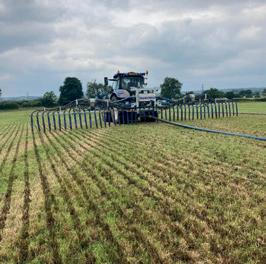

With air and water quality of increasing concern – and extremely high fertiliser prices – it’s a no-brainer to make use of the new scheme,” says CAAV secretary and advisor Jeremy Moody.
“Water legislation is tightening and it’s not going to go away. Improving slurry stores to benefit the environment is likely to become a statutory requirement in future, so while the Government is offering money to get there it makes sense to take it.”


The grant offers pig, beef and dairy producers between £25,000 and £250,000 – paid in arrears – to improve or expand their slurry storage capacity to six months, including fitting impermeable covers on grant-funded stores.
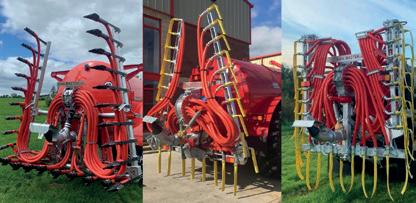
It will be competitive and focused on applications in priority areas, which deliver the





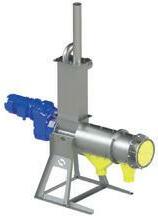


Anew slurry inoculant reduces the need for artificial fertilisers, lowers emissions and increases grass yields – and is said to improve soil health.
Launched this autumn, SlurryForSoil is a blend of 18 plant growth promoting bacteria and fungi. Manufactured and distributed by Sylgen Animal Health, it also contains enzymes to kick-start slurry break-down.
“SlurryForSoil pushes the boundaries of what a slurry inoculant does,” claims Slygen Animal Health director Romney Jackson.
“As well as making stirring slurry quicker and easier, improving the consistency to reduce blockages at application and retaining nutrients, it lowers emissions by significantly reducing the need for synthetic fertilisers and increasing grass yields."
The bacteria and fungi in SlurryForSoil have all been scientifically proven to mobilise nutrients and micronutrients, says Ms Romney.
“Many have also been found to control pathogens and diseases, predominantly through the stimulation of the plant hosts’ own defence mechanisms, and some control pests like nematodes, molluscs and insects."
The fungi, in particular, break down
microplastics as well as residual pesticides and organophosphates which can indirectly hamper grass growth.
A team at Duchy College tested the product this year at its Future Farm in Cornwall. Separate dairy herds with dedicated slurry lagoons enabled researchers to isolate and assess the impact of the slurry inoculant.

Samples of the treated and untreated slurry were analysed by researchers at NRM laboratories. So too were forage samples taken from the temporary grass ley which had received applications of the two slurries.
Results showed an increase in the retention of key nutrients in the treated slurry, such as ammonium, phosphorus, potassium and sulphur as well as magnesium, copper, zinc and calcium.
“Across the four cuts, resulting forage increased by an average of 17.8%, with some having more than a 30% increase in yield,” says Ms Romney.
“Nutritional analysis of the silage showed SlurryForSoil also helped improve the quality of the forage with an average decrease in NDF of 10.7% and increase in plant sugars of 27.7% with corresponding increases in digestibil
nitrogen retained in the slurry and potentially shows the microbes are playing a broader role both within the soil and the plants.
“These results mirror those of farmers who have been trialling SlurryForSoil on-farm. With increased yields and reduced need for synthetic fertiliser, they’ve seen an average return on investment of £55/acre.”
Mole Valley Farmers has launched a Nutrient Management Plan service to help livestock farms target the correct nutrients to grassland.
The web-based Nutrient Management Plan is operated by FACTS-qualified experts specialising in grassland and forage crops. It is approved by the Environment Agency and backed by AHDB. Any changes to RB209 are automatically updated.
Taking into account soil nutrition status, the plan looks at the nutrient requirements of different crops required to grow specific yields. It then looks at the nutrients available on the farm already from slurry and farmyard manure
From that information, the plan provides advice on fertiliser use and use of slurry and manure –as well as any soil advancements required. Nutrients are targeted only where they are needed and specifically for crop needs.
The service fee starts at £250 for the first 250 acres. The programme will allow farmers to target nutrients where they are needed, said Mole Valley head of grassland and soil agronomy Lisa
Slurry treated with the inoculant has a creamy consistency
Stimulates plant hosts' own defence mechanisms
“
















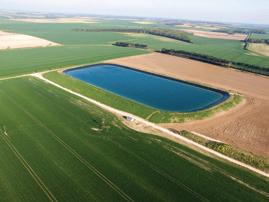




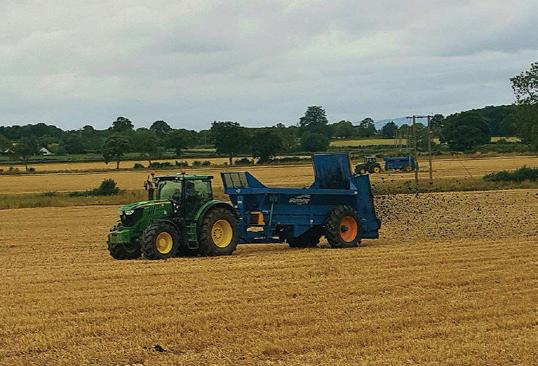


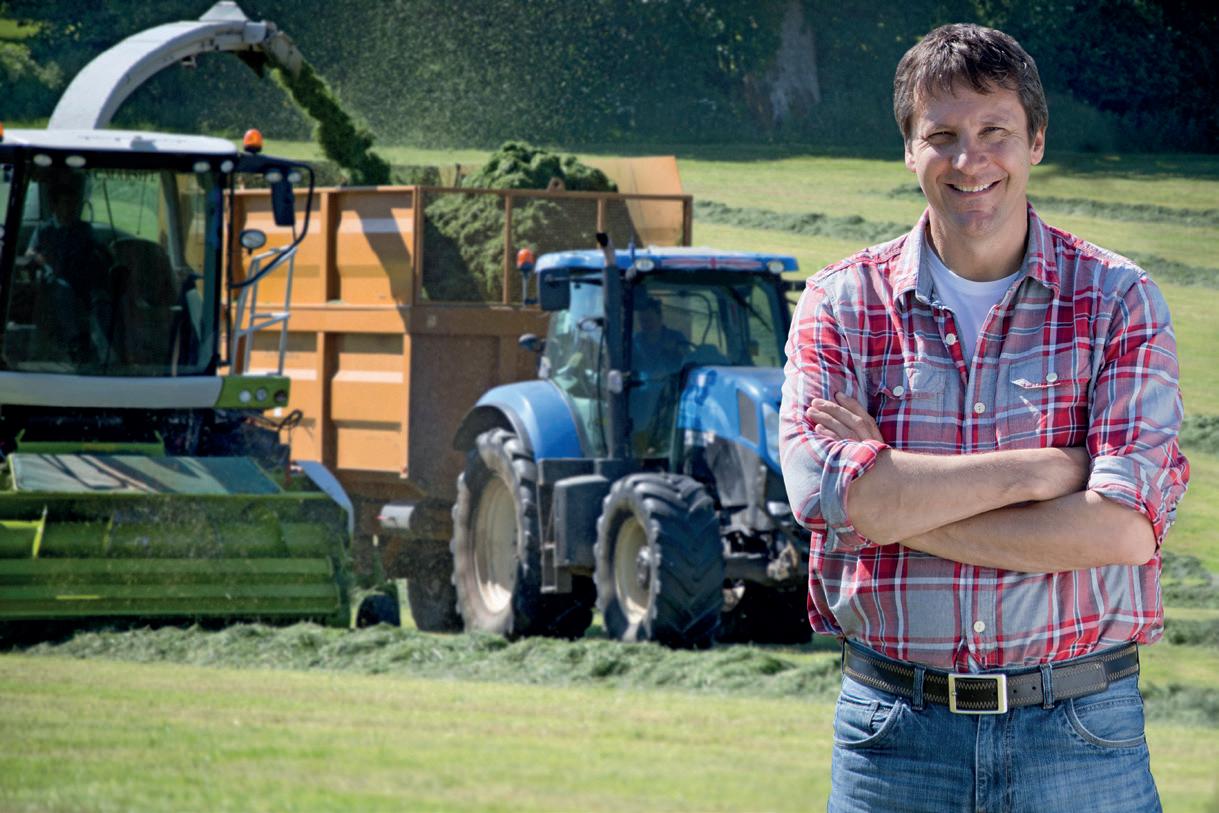









Selling grain forward makes sense – even though you might not get the best price, says Clodhopper.



Forward selling grain is always a contentious subject. Some growers still see it as a massive gamble. They are afraid of losing out if prices rise after their decision to sell. But others see it as a way of managing risk and evening out price fluctuations.
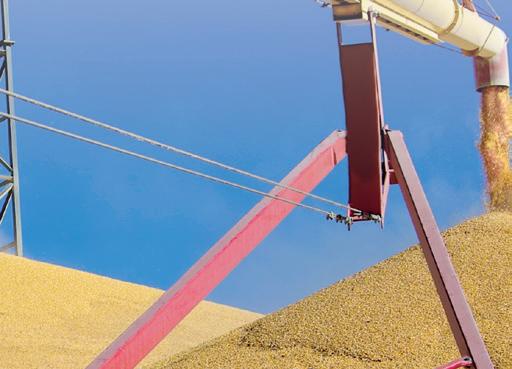
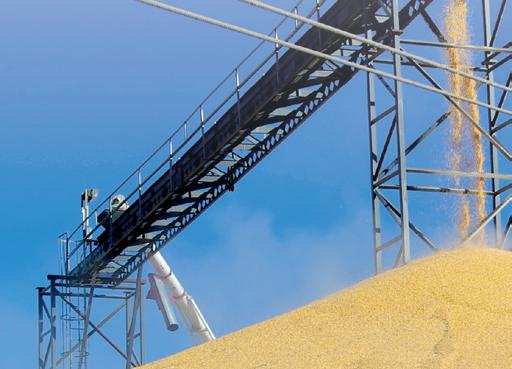
If you look at the figures, history shows us that selling at harvest generally means selling at the lowest prices – apart from in years with significant weather problems, such as excessive rainfall or drought as happened in 2018.
Why? Because a plentiful supply of grain in turn forces prices down. Alongside this, a bumper harvest puts grain handling and
storage capacity under pressure. Usually, this means it is a buyer’s market rather than a seller’s.
So forward selling appears to be a positive step in balancing sales across the year. What is critical is the farmer’s ability to know their cost of production – which enables the grower to know the precise point at which to trigger any forward selling profitably.
It was always my policy to assess the potential crop in the ground, estimate the likely yield and then sell a small proportion of that crop at harvest.
Depending on the yield, most years I had adequate storage, although it required extra work during July and August to lay the grain ducts and monitor the stored crop.
It was far easier to do away with any augers and elevators and simply tip the grain direct on the shed floor and then load straight into a waiting lorry.
I felt safe in the knowledge that I had well under-estimated the potential farm yield and took a standard 3t/acre level. This allowed me to sell 20-25% of the crop forward with some confidence, avoiding any sleepless nights by avoiding any over-selling.
It always seemed to work out well on ton-
nage and price. And I always felt the right decision had been made. I never achieved the best price but having committed the tonnage, I was always happy with the price agreed.
Sometimes I waited in vain for that magical £150/t price to arrive. Refusing to sell at a pound or two lower, I would then regret it all harvest. But in all, the whole system worked for me, rather than against.
It wasn’t just wheat I sold forward. Some good advice given to me by a grain merchant when selling linseed was to sell on an acreage basis rather than a fixed tonnage. With linseed, yields were often highly unpredictable and it was good advice indeed.
I tried to sell grain the same time every year: harvest, January, February and then June. Farm work was less demanding at those times and chopping and changing selling patterns never worked for me.
So I wonder whether it is time to consider some forward selling grain from this coming harvest? After all, prices may move downwards rapidly if Mr Putin decides to call it a day in Ukraine or the grain shipping agreements are finally sorted out.
This will leave growers with high input costs but much lower than expected output prices. And with those prices currently north of £200/t, surely its time to sell a small percentage and at least cover some of your growing costs.
It’s a lottery and anybody’s guess, so good luck and all the best for 2023.

I was always happy with the price.










